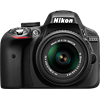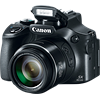Main
Model
Price
Advantages
launch
Announced
Body type
Camera subcategory
Sensor
Effective pixels
Max resolution
Sensor size
Sensor type
Processor
Image ratio w:h
Other resolutions
Sensor photo detectors
Image
ISO
Boosted ISO (maximum)
White balance presets
Custom white balance
Image stabilization
Uncompressed format
JPEG quality levels
Photography features
Minimum shutter speed
Maximum shutter speed
Aperture priority
Shutter priority
Manual exposure mode
Subject / scene modes
Built-in flash
Flash range
External flash
Flash modes
Continuous drive
Self-timer
Metering modes
Exposure compensation
WB Bracketing
Screen / viewfinder
Articulated LCD
Screen size
Screen dots
Touch screen
Screen type
Live view
Viewfinder type
Viewfinder coverage
Viewfinder magnification
Viewfinder resolution
Videography features
Resolutions
File Format
Microphone
Speaker
Videography notes
Optics & Focus
Autofocus
Digital zoom
Manual focus
Number of focus points
Lens mount
Focal length multiplier
Focal length (equiv.)
Optical zoom
Maximum aperture
Normal focus range
Macro focus range
Physical
Weight (inc. batteries)
Dimensions
Environmentally sealed
Battery
Battery details
Battery Life (CIPA)
Storage
Storage types
Storage included
Connectivity
USB
HDMI
Wireless
Wireless notes
Remote control
Microphone port
Headphone port
Other features
Orientation sensor
Timelapse recording
GPS
GPS notes
Samples
Videos
Summary
The D3300 maximum resolution of 6000 x 4000 pixels (24 megapixels) is better than the PowerShot SX60 HS maximum resolution of 4608 x 3072 pixels (16 megapixels). The D3300 has bigger sensor than the PowerShot SX60 HS: APS-C (23.5 x 15.6 mm) versus 1/2.3' (6.17 x 4.55 mm). It is the most significant advantage of this model as big sensor allows the photographer to make pictures of the more professional quality. The D3300 has a wider ISO range of 100-25600 in compare with 100-3200 ISO range of the PowerShot SX60 HS. This ISO numbers allow you to make good quality pictures in low light conditions. The D3300 has more presets of white balance - 12. It gives the photographer more control over colour. The PowerShot SX60 HS has better 4x digital zoom. The D3300 provides more focus points in compare with the PowerShot SX60 HS: 11 vs 9. More number of focus points means more convenience when attempting to focus on objects that are not centred.
The PowerShot SX60 HS has swiveling display that will allow the photographer to take pictures from any interesting perspective. The PowerShot SX60 HS display is better as it has more screen dots 922,000 in comparison to 921,000 dots of the D3300 display. The higher dot count display is better for reviewing images on your camera. The D3300 has better lowest (30 seconds) and highest (1/4000 second) shutter speeds.
The PowerShot SX60 HS has built-in Wi-Fi that will help the camera owner to transfer pictures quick and easy. The D3300 battery life is better in compare to the PowerShot SX60 HS battery life. According to CIPA standards the photographer will be able to capture 700 photos with the D3300 and only 340 with the PowerShot SX60 HS. The Nikon D3300 weighs 430g which is 220g less than the weight of the PowerShot SX60 HS. The Nikon D3300 can utilize optional accessory GPS devices. Recording GPS data can be useful if the camera owner is a traveller, to be able to go into the picture metadata and see exactly where a photo was taken.
The D3300 has 15 advantages and the PowerShot SX60 HS only 6 so the D3300 is the best choice. Get the lowest price on Amazon.


